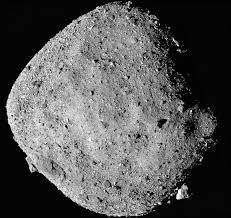UK Launch Sites – Exploring the Environmental Prospects and Issues
30th Nov 2023
As the United Kingdom enters a new space age, how does it square the inevitable criticisms that will come from the public when it comes to the environmental impact of the UK launch sites? What is the current state of the launch sites when it comes to their environmental reports and the potential impacts on the environment as a whole, as well as in their local areas.
SaxaVord Met With Criticism From Environmental Groups
SaxaVord is one of the key players in the new UK space race, and on the face of it, there are some environmental benefits and positives to the plays of the spaceport. As well as boosting the economy of Unst, the site has plans to lower CO2 emissions for future rocket launches.
The environmental effects of the Scottish space sector were discussed at the COP26 climate conference in Glasgow, with Operations Director Scott Hammond defending the Shetland Space Centre. The emissions from their first launch are expected not to exceed the annual output of “a handful of automobiles” though this definition leaves some room for interpretation.
The Scottish government and space experts have spoken of trying to reach net zero by 2025, but critics have spoken about the fact that not all of the impacts on the environment have been considered.
Air traffic controllers have also warned that SaxaVord’s plans to carry out up to 50 launches a year could bring further environmental complications, as commercial airlines will have to reroute transatlantic flights, meaning longer journeys and more carbon emissions.
Lockheed Martin’s Nik Smith has discussed that some satellites that will be launched from SaxaVord, will be used to monitor climate changes. “That cost-benefit easily is in favour of doing this activity,” he said. So the question is whether the potential benefits really do outweigh the negatives in an environmental sense.
Impacts of UK launch sites on local ecology from emissions
SaxaVord’s SaxaVord Spaceport AEE V2.1 Assessment of Environmental Effects document, created alongside the CAA, also outlines information about pollutants and climate change.
Pollutants include:
“Vehicle exhaust emissions of oxides of nitrogen (NOx) and particulate matter (PM10 and PM2.5); and Carbon monoxide (CO) emissions from launches.”
The report also outlines the fact that “the majority of emissions from burning RP-1 and LOX are nitrogen gas and oxygen gas, alongside much smaller quantities of carbon dioxide (CO2) and CO. Trace amounts of other NAQS pollutants, such as Volatile organic compounds (VOCs), oxides of nitrogen (NOx), oxides of sulphur (SOx) and particulate matter (PM10) could be released, but the total amount of any given release would be negligible per event and recorded as zero.”
Impacts on local ecology from emissions and environmental factors were also deemed in the report to be minimal.
Frank Strang, CEO of SaxaVord Spaceport, spoke about the way SaxaVord is tackling potential environmental issues:
“It is in our DNA at SaxaVord to take our obligations to the environment very seriously, underlined by the fact that to the best of my knowledge we are the only spaceport in Scotland that employs a full-time Sustainability Officer.”
“Through the CAA’s consultation, we will welcome constructive comments on how to improve the mitigation of our environmental impacts.”
But not everybody in the area feels positively about the reports and their conclusions regarding the local area, or the overall global impact on the environment. Shetland Labour councillor Tom Morton, has been extremely critical and has explained an “unseemly rush” to create SaxaVord’s launch capabilities:
“Amid all the bluster and blarney about SaxaVord’s ‘ideal’ position for rocket launches, the importance of civilian air routes to, from and via Iceland appears to have been overlooked or simply ignored,” he said in an interview with The Ferret.
“The entire project has been hallmarked by haste and a sense that nothing, be it wildlife, vegetation, peat or passing airliners, will be permitted to stand in its way.”
Spaceport Cornwall Rebuild Plans After Failed Virgin Launch
Virgin Orbit’s failed launch has changed a lot of the landscape for the UK space industry, and for Spaceport Cornwall, it has also changed the projections and business plan.
Virgin have come in for a lot of criticism from environmental activists, which is little surprise when you consider the company and the fact that the sibling company sends tens of thousands of flights over the Atlantic every year.
Virgin Orbit sent a modified Boeing 747 on a long flight before the plane released the rocket into the air. The modified plane went on a 2,000km journey and is estimated to have released around 63 tonnes of CO2 into Earth’s atmosphere before even considering the launcher. This horizontal launch method released around 75.5 tonnes of CO2. A normal vertical launch would be around half this; 30 tonnes in total.
What do reports say?
The University of Exeter was commissioned to create a report into the environmental impacts of launches from the spaceport, coming to numerous conclusions on the environmental outlook:
“When the radiative forcing (RF) effects are excluded, annual life cycle emissions associated with launches at Spaceport Cornwall would be between 0.033% (year 2022) and 0.041% (year 2023 onwards) of total territorial GHG emissions for Cornwall and the Isles of Scilly (CIoS) in 2019. When RF effects are considered, annual life cycle emissions associated with launches at Spaceport Cornwall would be between 0.057% (year 2022) and 0.071% (year 2023 onwards) of total territorial GHG emissions for CIoS in 2019. These percentages would be higher when total CIoS GHG emissions reduce in the future.”
This full report can be read here, but the biggest of the launch partners for Spaceport Cornwall has left the scene, with no further Virgin Orbit launches on the horizon, things have changed for the spaceport, and in all likelihood a lot of these figures will be altered with new partners. They will need to be recertified with new launch partners, which will likely mean more environmental appraisals.
Spaceport Cornwall’s literature promises a lot to mitigate any environmental impacts, including carbon offsetting.
“We are committed to carbon neutrality by 2030, but we also want to take it further. We want to be the First Net-Zero Spaceport in the World. We will closely monitor and track emissions as launches begin. Initially by offsetting the impacts and then look to longer-term solutions such as partnerships to understand the carbon impact of rocket launches and developing biofuel.”
They also promise a lot of environmental programmes and progress for the future, including a brand-new R&D facility for greener satellite integration & launch processes, electrification of their on-site fleet, and increased use of biofuels.
Sutherland Spaceport Makes Environmental Pledges
Work is underway at Sutherland Spaceport, and this has also brought with it environmental pledges and promises, even if there is limited data.
“Sutherland represents a new breed of spaceport, for a new breed of rocket,” said Kristian von Bengtson, chief development officer at Orbex, key launch partner for the site.
“This is 21st century, agile spaceflight with sustainability at its core. With the construction of Sutherland Spaceport underway, this is an important piece of the puzzle that will make the UK a modern space nation. Just as importantly, we’re hopefully also setting the tone for how business can be a force for good, creating jobs and opportunities while minimising the impact upon the environment.”
Like Skyrora, Orbex Prime will be using a futuristic and environmentally forward-thinking fuel. Theirs is called Futuria Liquid Gas, supplied by Calor. A study by Exeter University and shared by Orbex showed that an Orbex Prime rocket could produce 96% less in carbon emissions compared to launch systems using fossil fuels.
In terms of the overall build of the spaceport, the environmental impact is clear to see, and outlined in a 2020 environmental report. “The high-level greenhouse gas assessment has estimated the construction of the proposed development would result in approximately 16,852 tonnes of carbon dioxide equivalent emissions over the course of the 15-month construction period based on information available at the time of the assessment. IEMA best practice guidance states all GHG emissions contribute towards climate change and are significant.”
However, when the operation is considered, the spaceport claims to be “carbon neutral in terms of construction and operation,” which remains to be seen.
Anders Povlsen, a Danish tycoon and significant UK landowner, launched a judicial review against Space Hub Sutherland, which was quickly thrown out. Judge Raymond Doherty of the Supreme Courts of Scotland rejected Povlsen’s petition in a detailed, 30-page ruling released in August.
An Inevitable Cause For Debate
Fast progress and an ever-changing landscape in the space industry means that the environmental outlook can also change. Virgin Orbit’s plight is the perfect example of this.
However, the space industry inevitably has a footprint, and at a time when the UK is committing to climate targets and even environmental standards set in the King’s Astra Carta, there is bound to be some debate.
The debate is nuanced and tricky, too, with satellites from many of the space launches being used to aid efforts to tackle climate change and natural disasters stemming from climate change. We expect this to rumble on, and we hope initiatives like the Astra Carta encourage more cooperation.






Thank you for your comment! It will be visible on the site after moderation.